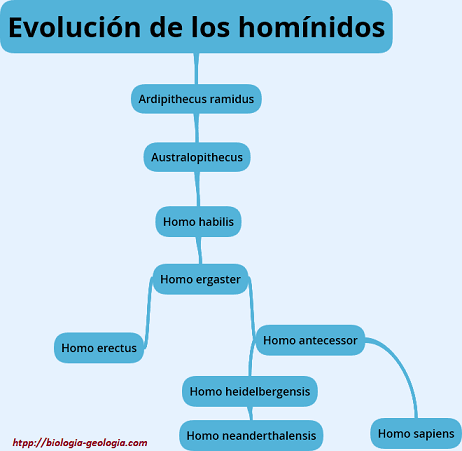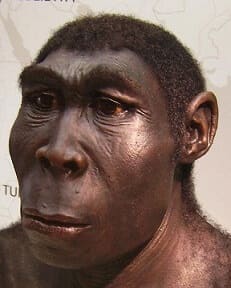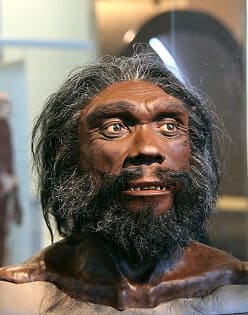Hominids
The hominids are a type of primates characterized by upright posture and the bipedalism. Among the hominids today are the humans and their close relatives, orangutans, gorillas, chimpanzees and bonobos.
Hominids have diversified over time, originating different genera and species, many of which coexisted in the same space.
When the primates had to leave the trees and go down to the ground, they became more vulnerable, so the appearance of bipedalism was a very advantageous feature, since it allowed them to see their surroundings better and see if there were predators. In addition, having their hands free allowed them to manipulate objects, which was also a great advantage over other competing species. The manipulation of objects caused the brain to increase in size , since it requires a lot of cerebral cortex, and to develop intelligence, emotions and the ability to speak.
The main characteristic of the genus Homo is the presence of an opposable thumb that allows it to manipulate instruments, and a developed brain that coordinates the movements of the muscles so that they can perform precise movements. The brain is larger and, above all, it has many folds (convolutions) that allow to have a large surface of the cerebral cortex in a not too large volume.
The main hominids that have existed throughout history before reaching Homo sapiens have been:
- Ardipithecus ramidus.
- Australopithecus.
- Homo habilis.
- Homo ergaster.
- Homo erectus.
- Homo antecessor.
- Homo heidelbergensis.
- Homo neanderthalensis.
- Homo sapiens.

Interactive activity: Order the processes that led to the appearance of the genus Homo.




